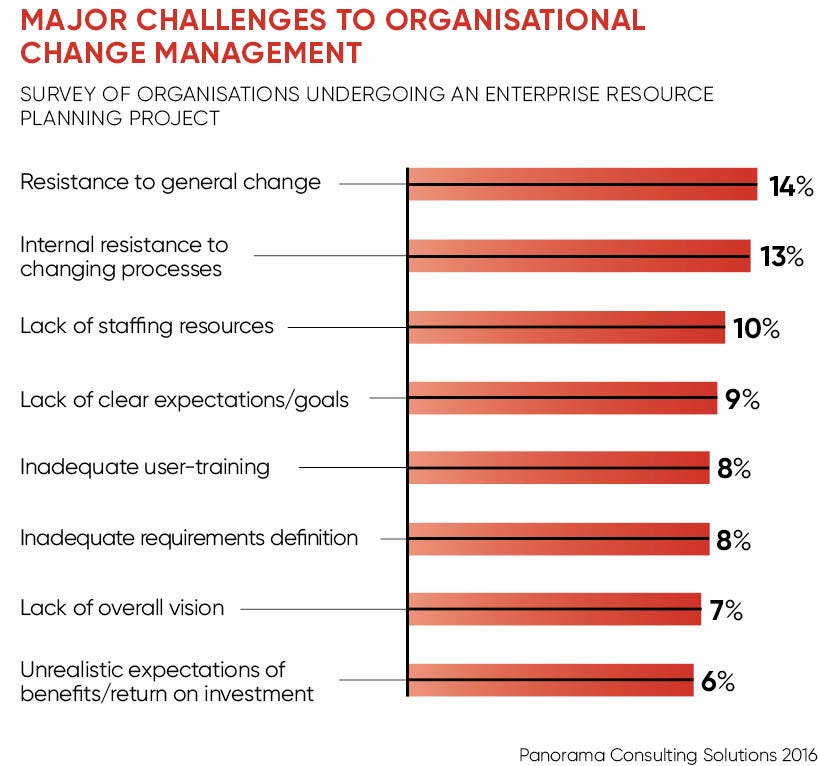Legacy initiatives are often one of the most common and early hurdles a digital transformation endeavour can face.
Somewhere in the organisation, a well-intentioned team will stumble upon some tech that could help them work better, smarter or faster. Or an executive, frustrated with inefficiencies or perceived outdated ways of working, will set about trying to do something about it.
Often these actions will go on under the radar as people side-step the treacle of corporate process and bureaucracy. After all, why not? Systems implementation isn’t what it once was, with new cloud-based tools active within minutes and on flexible pricing plans easily accommodated by most departmental discretionary budgets.
The starting point is ensuring a common definition of the business problem or opportunity which the transformation is designed to tackle
Why should these progressive individuals sit and wait for a wider transformation programme to solve their problems or for the wider organisation to bring its oil-tanker-esque pace to decision-making? The benefit to their teams can be immediate.
While commonplace, these aren’t actions of malice or mutiny. Opportunism? Perhaps. Frustration? Often. Understandable? Usually. As the saying goes, nature abhors a vacuum.
Company-wide transformation
Then along comes the pan-organisational transformation endeavour. A business recognises the need or opportunity for change at the most senior level. It sets out its ambitions to leverage digital tools and technology to transform how it operates, promising value through both efficiencies and effectiveness across the enterprise. It appoints a central leader and/or team to steward the process, and allocates the resources necessary to make the transformation happen.
It’s at this point the transformers begin to encounter the challenges of legacies. They’ll start to uncover pockets of technology, tools and systems they didn’t know parts of the organisation were using. In some cases, they’ll keep finding things months into the journey, often too late to do anything about.
They’ll encounter some positive reception to the business’ intent from those hungry for greater digitisation or the expertise and funding to accomplish it. But they’ll also encounter resistance from other teams that “have our own tools, thank you very much”, “are already more digitally savvy than the rest of the business” or are simply “different to the rest of the business and a generic company-wide solution won’t work”.

Practical advice
Tackling legacy systems and managing the dissenting voices requires a measured approach.
The starting point is ensuring a common definition of the business problem or opportunity which the transformation is designed to tackle. Too often, transformations focus on communicating proposed solutions, rather than building a shared understanding of the rationale for change and consensus as to its importance. And it’s the proposed solutions which face these legacy barriers and face subjective criticism, often from those lacking the expertise to cast judgment.
Focusing stakeholder communications on the business problem or opportunity helps to identify pain points by department. If the business problem is uncompetitive customer delivery performance, the transformation team can tease out what this means for the marketing team in customer churn; what it means for the finance team in reduced margins and lost revenues; what it means for the customer service team in time lost in complaint processing; and what it means for operations in terms of lost productivity.
It also enables those leading a transformation to begin to probe what’s already happening across the organisation that might fall into the scope of their plans. What tools do we currently have that address these issues? Which teams are already making progress and what can we learn from them? What other initiatives around the organisation are targeting these same business problems and how do we dovetail or connect these for maximum impact?
This balanced approach to stakeholder involvement in transformation focuses teams on business decisions, not technology decisions, and can give a transformation team a solid foundation from which to work around legacies, not get blindsided by them.
Company-wide transformation

